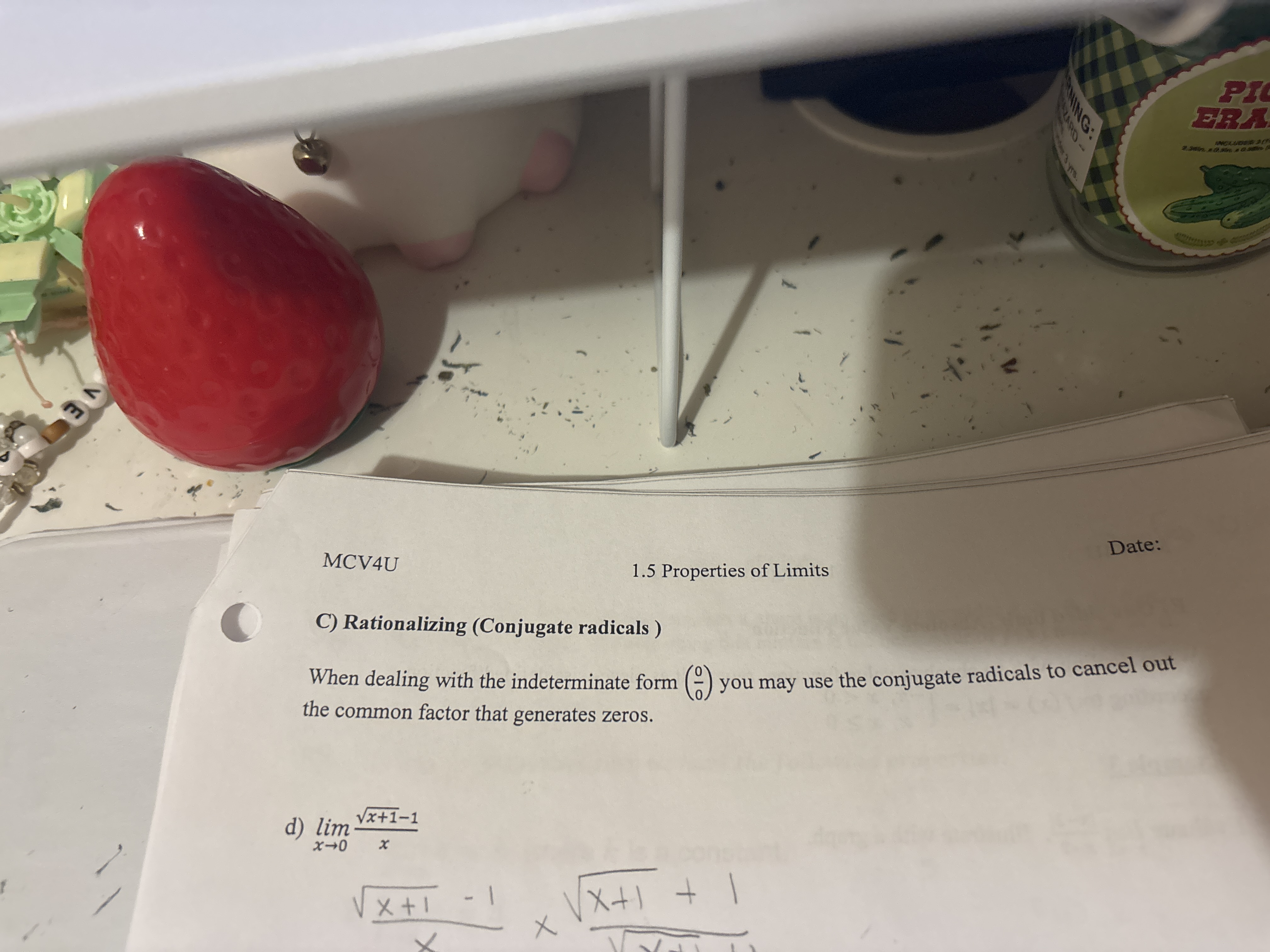Evaluate the following limit: lim (x→0) (√(x+1) - 1) / x

Understand the Problem
The question asks to evaluate the limit of a function as x approaches 0. The function is given as (√(x+1) - 1) / x. This problem involves using the concept of limits and may require techniques like rationalization to simplify the expression and find the limit.
Answer
$\frac{1}{2}$
Answer for screen readers
$\frac{1}{2}$
Steps to Solve
- Identify the Indeterminate Form
First, we check what happens when we directly substitute $x = 0$ into the expression:
$\frac{\sqrt{0+1}-1}{0} = \frac{\sqrt{1}-1}{0} = \frac{1-1}{0} = \frac{0}{0}$
This is an indeterminate form, so we need to manipulate the expression to evaluate the limit.
- Rationalize the Numerator
To rationalize the numerator, we multiply the expression by the conjugate of the numerator, which is $\sqrt{x+1} + 1$, divided by itself:
$$ \lim_{x \to 0} \frac{\sqrt{x+1}-1}{x} \cdot \frac{\sqrt{x+1}+1}{\sqrt{x+1}+1} $$
- Simplify the Expression
Multiplying the numerators, we get:
$$ (\sqrt{x+1} - 1)(\sqrt{x+1} + 1) = (x+1) - 1 = x $$
So the expression becomes:
$$ \lim_{x \to 0} \frac{x}{x(\sqrt{x+1}+1)} $$
- Cancel the Common Factor
We can cancel the common factor of $x$ from the numerator and denominator:
$$ \lim_{x \to 0} \frac{1}{\sqrt{x+1}+1} $$
- Evaluate the Limit
Now we can substitute $x = 0$ into the simplified expression:
$$ \frac{1}{\sqrt{0+1}+1} = \frac{1}{\sqrt{1}+1} = \frac{1}{1+1} = \frac{1}{2} $$
$\frac{1}{2}$
More Information
The limit of the given expression as $x$ approaches 0 is $\frac{1}{2}$. Rationalization is a common technique for evaluating limits involving radicals.
Tips
A common mistake is to directly substitute $x=0$ without attempting to simplify the expression first, which leads to the indeterminate form $\frac{0}{0}$. Failing to correctly multiply by the conjugate, or making algebraic errors during simplification are also common pitfalls. Another mistake is not canceling the common factor $x$ after rationalizing the numerator.
AI-generated content may contain errors. Please verify critical information